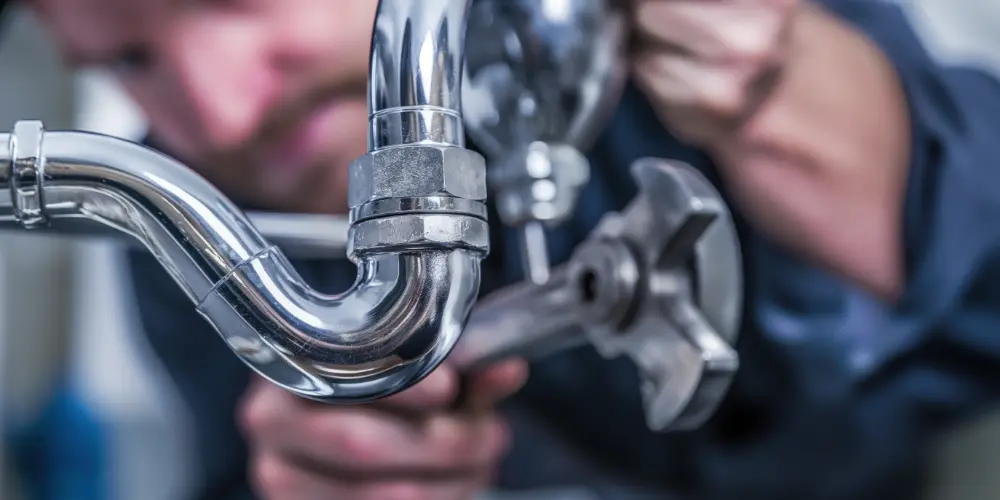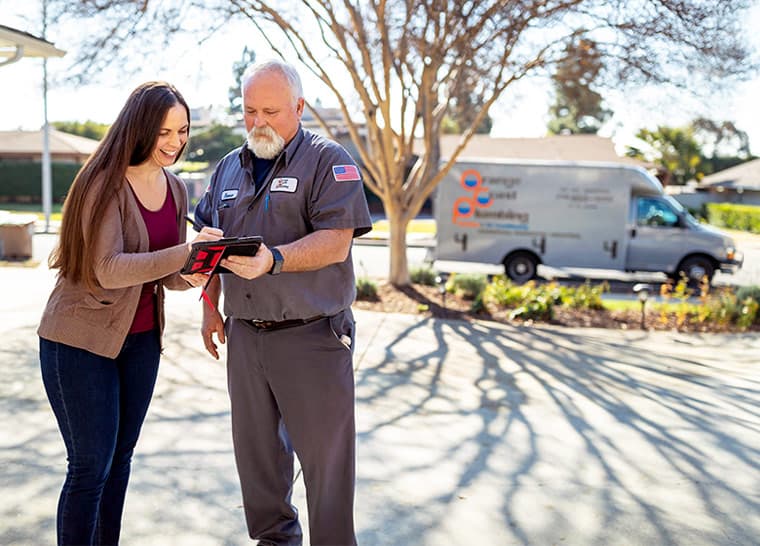A P-trap sits below your toilet, kitchen sink, bathtub, and washing machine drain, out of sight and mostly out of mind. Attached to the plumbing system, it may look more like a “U-trap.”
This unassuming fixture helps to keep your home free of sewer gases.
Without it — or them, because every home has multiple P-traps — your home life would be smelly, indeed.
Why Is a P-Trap Called a “P-Trap?”
The term “P-trap” derives from the fixture’s shape, which resembles the letter “P” when viewed from the side.
The letters “A” or “W” simply wouldn’t do the job.
- The curved section of the P-trap holds a small amount of water, creating a seal that blocks sewer gases from escaping into your home.
- The trap’s vertical section connects to a drainpipe, carrying wastewater down and out of your home.
- The P-trap’s horizontal portion connects to a vent pipe, allowing air to enter and maintain proper pressure in the plumbing system.
How Does a P-Trap Work?
- When you turn on your faucet or flush your toilet, water flows through your pipes and into the P-trap.
- This creates a suction that pulls any standing water from the trap and sends it down the drain.
- Afterward, fresh water fills up the curved section again, creating a new seal against sewer gases.
- This process is repeated whenever you use water in your home. Many flushes make for a very busy P-trap!
Common P-Trap Problems
Despite its uncomplicated nature, a P-trap can experience issues if you treat it poorly or fail to maintain it.
- Debris, like hair, food particles, and grease, can accumulate in the P-trap, leading to slow drainage or complete blockages. Regular cleaning can prevent this.
- Seals and connections in the P-trap can wear out, causing leaks. Tightening the connections or replacing worn-out parts can resolve this issue.
- If a sink or drain is unused, water in the P-trap can evaporate, allowing sewer gases to escape. Running water through the drain occasionally can prevent this.
Proactively dealing with these problems can save you time, money, and the hassle of dealing with more significant plumbing snafus down the line.
How to Clean a P-Trap
Cleaning a P-trap may sound daunting, but it’s relatively straightforward for sinks and washing machine outlets. Toilets and bathtubs are another matter, and you’ll need a plumber.
Tools
- Plastic bucket
- Adjustable wrench with a wide jaw
- Rubber gloves
- Wire or flexible bottle brush
Steps for Cleaning
- Place the bucket underneath the P-trap to catch water or debris.
- Loosen the slip nuts on either end of the P-trap. Carefully remove the trap and empty its contents into the bucket.
- Use a brush or a piece of wire to clear any remaining debris. Rinse the P-trap thoroughly with water.
- Reassemble the trap and tighten the slip nuts. Run water through the drain to check for leaks.
Additional Considerations for P-Traps
- P-traps are made from PVC, ABS, or metal. While plastic traps are more resistant to corrosion and easier to install, metal traps (like chrome or brass) are more durable. Consider these factors when the time comes to replace your P-traps.
- Proper ventilation is crucial to prevent pressure buildup. A poorly vented P-trap can affect the performance and health of your plumbing system.
- Regularly inspect your plumbing system and P-traps as part of home maintenance. Check for unusual smells, slow drainage, or leaks that might indicate a problem.
- When in doubt, call a professional plumber. Attempting to fix a plumbing issue without the proper tools or knowledge can lead to bigger problems and costly repairs.
FAQs: Troubleshooting the P-Trap
Q: How often should I clean my P-trap?
Cleaning your P-trap every few months can prevent clogs and ensure smooth drainage. However, if you notice slow draining or odors, it might be time for an earlier check.
Q: Can a P-trap dry out?
Yes, especially if the sink or drain isn’t used regularly. Pouring water down the drain occasionally can keep the P-trap filled and effective.
Q: What should I do if my P-trap is leaking?
First, try tightening the connections. If that doesn’t work, you may need to replace the seals or the entire P-trap.
Q: Can I use chemical drain cleaners on my P-trap?
We advise against drain cleaners, which can damage P-traps and create further problems. Instead, use mechanical cleaning methods or consult a professional.
Q: How can I tell if my P-trap is clogged?
Signs of a clogged P-trap include slow drainage, gurgling sounds from the sink or drain, and unpleasant odors emanating from the drain. If you notice these symptoms, it’s time to inspect and clean the P-trap.
Q: Is it safe to remove a P-trap DIY?
Yes, with the right tools and safety precautions, it’s safe to remove a P-trap for cleaning or inspection. Have a bucket ready to catch any water and debris, and wear rubber gloves for hygiene.
Q: Do P-traps need to be replaced regularly?
Not unless there are issues like corrosion, leaks, or persistent blockages. Regular inspection can help determine if replacement is necessary.
Q: Can a faulty P-trap cause sewage backup in my home?
While a faulty P-trap is unlikely to cause a sewage backup, issues such as clogs or improper sealing can lead to drainage problems that exacerbate backups in the plumbing system. As always, regular maintenance mitigates these risks.


